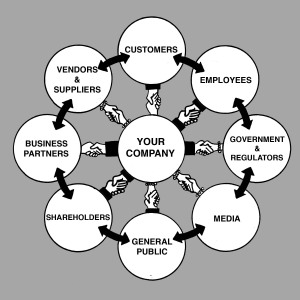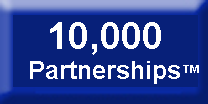Please enjoy this article I wrote, published in the September issue of IABC’s Communications World magazine.
So you found the perfect partner organization for your cause marketing campaign. You self-assessed without mercy. You specified what you’re bringing to the table, researched closely-aligned organizations, compared objectives, and secured a partnership that’s a win-win for everyone.
Nice job!
But before you start handing out the cigars, it’s important to set your partnership up for long-term success. How? By:
•Establishing and maintaining trust.
•Exhibiting flexibility and open communication.
•Specifying measurement criteria.
•Considering scalability and growth potential.
These partnership sustainability safeguards are critical, not only to new partnerships but also to those that have been chugging along for a while.
Build trust and be transparent
All successful relationships, including cause marketing partnerships, are based on trust—and nothing forms trust faster than telling the truth. This means all partners openly discuss their goals, vulnerabilities and needs, and honestly address hidden agendas before they cause problems.
Transparency is vital for effectively engaging both your target market and your partner organizations. A good example of an organization that requires stringent transparency in all of their cause-related partnerships is the American Red Cross, whose required donation language for any cause marketing donation program reads:
“XYZ will donate to the American Red Cross, including the amount of the donation as a flat fee (e.g. $1 for every shirt sold) or a percentage (e.g. 25% of the retail sales price) and the time frame (e.g. from September 1, 2014 until August 31, 2015).”
This kind of full transparency creates trust with the public—and with all partners.
Remain flexible with open communication
Staying on schedule and on target is important, but when a new opportunity appears, stay open-minded about it, and help others in your partnership to do so as well. It could be a special event, a major media interview, or an entirely “off-the-wall” promotional idea. It could be that a new partner wishes to join your campaign. Explore these potential opportunities, while keeping in mind your resources and priorities.
Open communication is key as well. If you’re the point-person from your organization, it’s your job to keep all of your stakeholders fully informed of all aspects of the partnership, whether good or not so good. Keep and publish minutes of your meetings, set regular times to convene as a full partnership team, and when issues, disagreements or other challenges arise, communicate your concerns and work them out as a team as soon as possible. In nearly all cases, overcoming challenges together strengthens the partnership and the individual relationships.
Flexibility, openness, and clear communication will keep your partnership on solid ground.
Set up measurement criteria
Early in your partnership development, collaborate with your partners to determine which partnership goals, both individual and collective, are most important, and create concrete, measurable criteria for evaluation. For example:
•Does one partner want a facility built by a certain date? A specific amount of increased funding or donations raised? Certain pro bono services?
•Does a partner want a certain number of volunteers recruited? A particular number of volunteer hours provided?
•Is a partner expecting a certain value in media exposure, community goodwill or new strategic relationships?
To be most effective in evaluating your partnership’s progress, establish starting benchmarks using specific metrics and measurement processes to use throughout the campaign.
Here’s an example: For its 2006 Prepare Bay Area partnership with Pacific Gas & Electric (PG&E), the American Red Cross Bay Area chapter used as a starting benchmark its survey finding that only 6% of San Francisco Bay Area residents were prepared for a major disaster. At the beginning of each year of the three-year campaign, the partnership surveyed its target audiences to understand clearly where the initiative stood against its goals. When they hit 26% prepared at the end of the campaign, they had some serious, verifiable bragging rights.

Mobile billboards like this one in front of San Francisco’s Ferry Building showing the potential devastation of an earthquake were part of the Prepare Bay Area campaign, a partnership between the American Red Cross and utility company Pacific Gas & Electric.
Measurable benchmarks and ongoing monitoring allow you to know where you are, see whether you are on the right path to success, and tweak your campaign if needed.
Scalability and growth potential
The clearest indication of a successful partnership is when all partners want to continue their relationship. Following the success of Prepare Bay Area, PG&E and the American Red Cross Bay Area chapter again teamed up to expand the preparedness program through a broader Ready Neighborhoods initiative.
In order to deepen their impact by scaling the program out beyond the Bay Area and across the state of California, PG&E more than doubled its original US$1 million over three-years financial commitment–and has continued to partner in this important campaign ever since.
The recognition PG&E and the American Red Cross chapters have received due to their Ready Neighborhoods partnership has been tremendous: Last year, the U.S. Federal Emergency Management Agency presented these organizations with its prestigious Community Preparedness Award in a high-profile ceremony and community event.
Patience
The most successful partnerships do not hit their stride until the second or third year. But if you’ve built trust and confidence, remained flexible and communicative, measured your pre-set criteria and kept your eye on future growth, you’ll have a strong support system of energized team members and partners who want to keep it going, establishing a continual cycle of creating a greater good.




 Posted by Bruce Burtch
Posted by Bruce Burtch 









